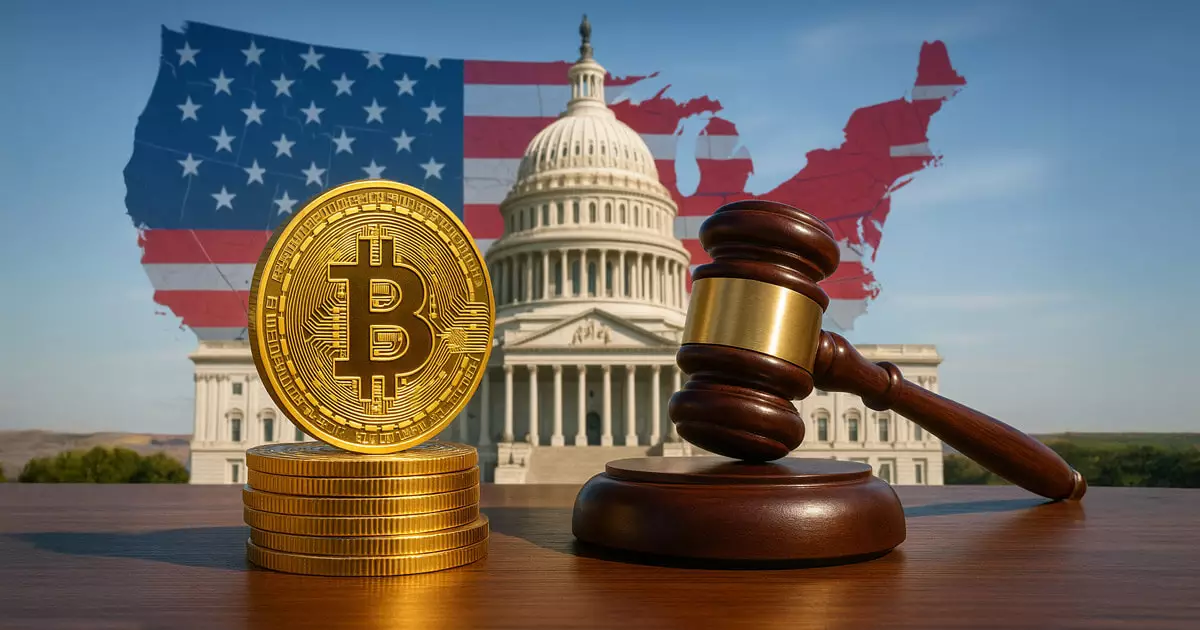In a political landscape often marred by division, the introduction of the Digital Asset Market Clarity Act on May 29 stands as a beacon of bipartisan cooperation that could very well redefine the future of cryptocurrency regulation in the United States. Championed by House Financial Services Committee Chairman French Hill, this 249-page bill seeks to unify the chaotic patchwork of cryptocurrency laws under a federal regime. It’s an ambitious endeavor that offers much-needed clarity to an industry plagued by confusion and uncertainty, particularly regarding the distinctions between securities and commodities. At first glance, it appears to be an enlightened move towards fostering innovation while ensuring regulatory oversight.
However, one cannot help but wonder whether this newfound clarity truly aligns with the original ethos of cryptocurrencies. Hill touts the proposed regulation as a way to secure America’s position as the global leader in digital assets, yet such sweeping legislation could inadvertently stifle the very innovation it aims to promote by imposing uniform regulations that may not fit every unique digital product.
Definitions that Demystify
One of the most significant contributions of the Digital Asset Market Clarity Act is its attempt to define ambiguous terms that have long confounded entrepreneurs, traders, and investors alike. The establishment of terms like “digital commodity,” “investment-contract asset,” and “permitted payment stablecoin” could transform how digital assets operate within the confines of U.S. law. By codifying these definitions into the Securities Act, Exchange Act, and Commodity Exchange Act, the bill aspires to eliminate the confusion associated with classifications that have historically lead to litigation and regulatory headaches.
Nonetheless, these definitions are a double-edged sword. While they provide a framework for regulation, they also risk freezing the evolving nature of digital assets into rigid categories. This act moves us toward safe harbor classifications, yet there’s a danger of bureaucratic inertia that could prevent the organic growth of blockchain technologies. Does a one-size-fits-all approach truly capture the nuances of such diverse digital assets? Only time will tell.
The Safe Harbor Provision: A Double-Edged Sword
Interestingly, the proposal includes a four-year safe harbor for primary token offerings that meet specific criteria, such as maintaining total funding below $75 million. This element is being praised by some as a necessary cushion for startups to thrive without fear of immediate regulatory repercussions. Ohio Republican Warren Davidson emphasizes that this fosters self-custody and transaction freedom, reflecting a push toward personal autonomy in digital finance.
However, while the safe harbor provision seems beneficial on the surface, we must critically assess it within the broader context of innovation. Will this limited period adequately shield emerging projects from the regulatory fallout associated with traditional securities? Or, conversely, could it create a regulatory “Goldilocks zone” that makes innovation overly cautious and conservative, leading to missed opportunities?
Regulating by Committee: The Role of CFTC
Another crucial element introduced by the Digital Asset Market Clarity Act is the proposed shift in regulatory oversight for spot trading, brokerage, and custody of digital commodities to the Commodity Futures Trading Commission (CFTC). While this move offers potential streamlining of digital asset regulations, it also raises questions about the efficiency and effectiveness of having multiple regulatory bodies managing different aspects of cryptocurrency.
Moreover, cementing CFTC oversight doesn’t come without its pitfalls. The maintenance of dual oversight for hybrid products, for example, could lead to jurisdictional disputes that further complicate regulatory compliance. If the goal is to eliminate ambiguity, are we merely exchanging one type of confusion for another?
Reactions from the Political Sphere
Reactions to the bill have been varied, underscoring the complex web of interests entwined in cryptocurrency legislation. Proponents like House Majority Whip Tom Emmer hail it as a “bold step” to ensure that the next iteration of the internet remains under U.S. control, a clear nod to both economic and geopolitical considerations. In contrast, doubts arise about whether these well-meaning initiatives can address the myriad consumer protections and inclusivity goals touted by its supporters.
As the House Financial Services and Agriculture committees prepare for joint markups, one has to ask: Will the resulting legislation genuinely empower individuals? Or will it govern them, creating yet another layer of regulation over what was designed to be a decentralized financial revolution?
The debate around this bill isn’t just about regulatory clarity; it’s about fundamentally understanding what digital assets represent in an evolving financial ecosystem. The stakes are high, and the outcome could very well determine whether cryptocurrencies flourish or flounder in a regulated environment.


Leave a Reply